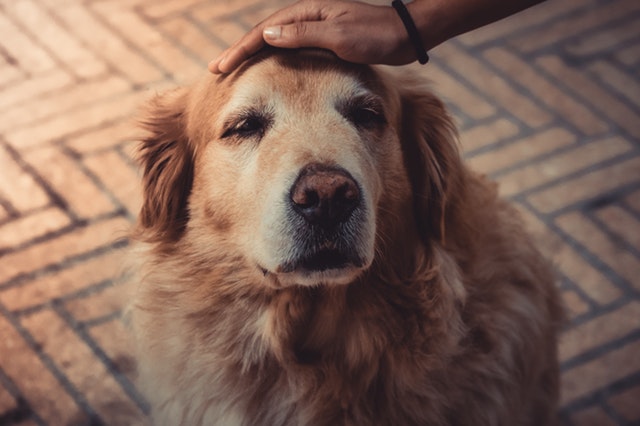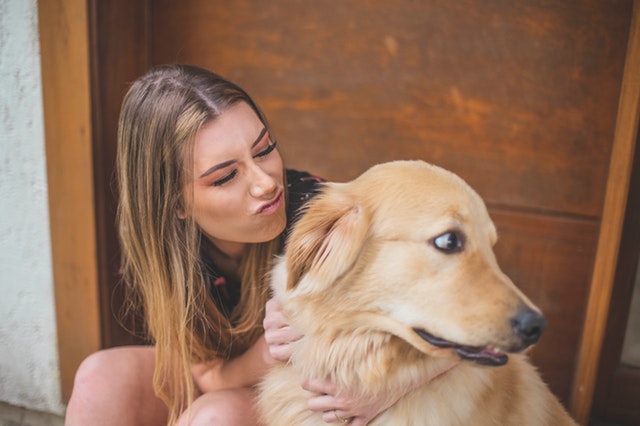2019-06-04

Dogs are friendly creatures who love to show their energy and enthusiasm to their owners, families, friends as well as strangers. Their happy emotion can bring us lots of fun and help to reduce the stress of a person. Endless passion is part of their nature but also a double-edged sword. It is embarrassing when a dog jumps up to investigate an encounter and it can lead to many inconveniences or injuries. For example, when a large active dog jumps all over family members wearing beautiful outfits, or over the guest, who is a little unsteady standing up. Teaching your dog to behave calmly is not only good for welcoming a visitor but also beneficial for outdoor use such as going to a crowded shopping center. We can start training the dog to greet guests at home in a calm manner.
Thanks to another aspect of the nature of a dog, its trainability, we can discipline our dog to greet visitors calmly in a few different ways.
Important things you should know before training
Before you start with the training, there are five things you need to know.
• First, you should set yourself a training goal. A clear goal helps you to design the training plan properly. When visitors arrive and ring the doorbell, your dog should sit or lie down in a place without rude behaviors like jumping and licking. After your dog has kept calm, you could reinforce the training according to your wishes, such as commanding him to stay in his bed or sit by your side.
• Adding training commands can speed up the training process.
• Treats are the motivation for the training. Use lots of delicious treats to encourage your dog to complete the task.
• Tell your visitors not to give in to your dog’s passion unless he is sitting or lying down. Also, you could recruit a friend to ring the doorbell and assist with the training process.
• Greeting guests in a polite manner is one of the tasks for service dogs. They are required to help the owner with physical disabilities to open the door. (Read on to find out more about behavioral requirements in a service dog)

Training guidance
We will outline the training process for you in the next part.
1. Stay calm
Dogs are social beings whose emotions change according to their owner’s behavior and mood. For example, if you joyfully go to the door, when the doorbell rings to greet the guests, your dog will look at your happy expression and feel that something interesting is about to happen and he will suddenly get very excited.
Therefore, to keep a dog calm around guests, it is important that you yourself are calm. Walk to the door at a leisurely pace. Then have your dog sit or lie down in one place (probably a mat, a bed or the floor) under the “sit” or “down” command.
Some hyperactive dogs who can not help circling and jumping up should be isolated before the guests arrive. You could leash him to a pillar, separate him from the door through baby gates, or put him in a room or crate for a few minutes.
2. Greet the guest
Open the door slowly and ask your guests not to look, touch or talk to your dog. The dog’s excitement will be tempered if you repeatedly ignore it. Your dog may rush in to sniff the guests and jump at them. This is the time to order the dog to sit or lie down again.
If your dog continues to jump all over the guests, put him in the nearest room by saying “no” and close the door. Wait 30 seconds and then release him again. If he repeats the rude behavior, say “no” again and put him back in the room.
When your dog has completely calmed down, give him delicious rewards and a lot of praise. It is advisable to practice this with everyone who comes to your home so that your dog will begin to understand that he will not get the treats or affection until he is calm.
3. Stay calm after greeting
When you and your guests sit down to start your conversation, it is best to take care of your dog by setting up a comfortable place for him, such as a dog bed or blanket.
If your dog is unwilling to stay in the place you have arranged for him, put some food or toys in his bed, which not only calms him down but also leads to long-term relaxation.
If your dog gets up and moves the items elsewhere, patiently return him and the items to the calm spot (the bed).
You could also add the “go to sleep” command after he has calmed down in his bed. Remember, rewarding him for a task, or after following a command, with treats is very powerful and a great motivator.